Kona Wah Wah 2 Alloy Flat Pedal
| Where To Buy | |||
|---|---|---|---|
Free shipping on orders over $50 (continental U.S. only).
International shipping available. Some exclusions apply. |
|||
Free shipping on orders over $50 (continental U.S. only).
International shipping available. Some exclusions apply. |
|||

When the Wah Wah hit the market over ten years ago now, it’s probably fair to say that it helped usher in the era of the modern flat pedal. It was flatter, thinner, and grippier than most of the other options out there, but ten years is a long time and by today’s standards the legendary Wah Wah had been left behind – until now, that is. The Wah Wah 2 was first launched in a composite version back in late 2017, which we tested with excellent results. We’ve now also put some trail time in with the alloy version, and it’s time to let you know if Kona has been able to reclaim a spot near the top of the flat pedal heap.
Kona Wah Wah 2 Alloy Highlights
- Forged and CNCed alloy body
- 110x120mm platform
- 16 replaceable pins per pedal
- Steel spindle
- Fully serviceable bearing system
- Colors: Black, Blue, Green, Orange, Red
- Weight: 428 grams (pair, verified)
- MSRP: $120.00
Initial Impressions
Upon initial inspection, the Wah Wah 2 offers everything you would be looking for in a modern flat pedal. At 120x120mm it features one of the largest platforms available, while the flat shape retains enough concavity to promise good grip on the trail. Compared to the composite version, the alloy pedal features a stronger steel spindle that runs on a large inboard DU bushing (instead of a needle bearing), which is housed in a prominent bulge, while a set of much smaller bearings allow the pedal to be kept very thin in the middle. Kona says that the axle and bearing system upgrades were applied to ensure that the alloy version can take a bit more abuse compared to the composite pedal. At 428 grams for the pair, the weight remains competitive in the category.



Diving further into the measurements, the Wah Wah 2 is right up there with the absolutely biggest pedals available today. When compared to the 17 other flat pedals tested as part of our flat pedal Face Off, the Wah Wah 2 boasts the longest Pin-To-Axle measurement of them all. It’s also among the thinnest, while retaining a wholly acceptable concavity score. The leading edges are heavily chamfered, to help the Wah Wah 2 glance off obstacles as opposed to hang up on them, while the strictly average pin length keeps the overall profile on the very low side.
| Width | Length | Thickness (at thickest) | Thickness (with pins) | Weight | Pin-To-Axle (PTA) |
120mm | 120mm | 16mm | 20mm | 428 grams | 120mm |
Longevity is another important aspect of a pedal’s performance. On the Wah Wah 2, the bearings and bushings can all be easily replaced by the average home mechanic. The same goes for the rear-loading pins, which can be removed and replaced even if you snap the pins off flush with the pedal surface. Rebuild kits and pin sets will be available directly from Kona as well as from Kona dealers ($10 USD for a full set of pins, $30 USD for the rebuild kit for one pedal).


On The Trail
Because of the inboard bearing bulge which sits flush to the crank arm, you may require a pedal washer or two depending on the design of your cranks or if you are running protective crank arm boots. Other than that, the installation just requires an 8-mm allen wrench and you’re good to go.

Compared to the composite version we tested previously, the alloy Wah Wah 2 gains an extra pin (the total count now stands at 8 per side). The overall feel of the platform does not change drastically as a result, but we found a little bit more support for awkward foot placement. In our experience alloy surfaces also tend to be a bit more grippy in and of themselves, which helps when things take a turn for the sloppier. Another difference we noted is that the composite pedal has a little bit of “give” in the whole pedal body, while the alloy version feels more “direct”.

A wide and large platform means lots of support even when your foot is in the wrong place. If you like to place your feet flush up against the crank arm, the inboard bearing bulge can get in the way a bit, but Kona has managed to still keep it relatively narrow so it shouldn't be a major issue. With the pedal being so wide, it also means you may find yourself smacking into trailside obstacles that smaller pedals could sneak by. That is part of the trade-off with big platforms and something to bear in mind when you chose the best pedal for the trails you ride. On the flipside, the Wah Wah 2 is also heavily chamfered, and its thin pedal body and average-length pins leaves it with a very low overall profile, so it’s very good at gliding across obstacles as opposed to hanging up. All in all, we think Kona got the balance between width and height just about right.

Comparing the alloy Wah Wah 2 to the winners in our flat pedal Face Off, we’d give it between an 8 and a 9 in the “grip” score, leaving the pedal in a position to challenge for a spot on the podium thanks to a strong performance when it comes to weight, physical dimensions, and longevity.
Things That Could Be Improved
At $120, the alloy Wah Wah 2 is competitively priced, and we have no major gripes with anything else either. A couple of spare pins in the box would be nice, not because they are costly to replace but because it’s convenient to have them at hand when you do break one. This is especially true of bespoke, rear-loading pins which can sometimes be harder to source (Kona will have full replacement sets available at $10 USD per set).
Long Term Durability
The original Wah Wah was one of the more durable pedals we’ve known, so the bar is set high for this new version. So far, we have about three months on the trail with the alloy Wah Wah 2, with only a certain amount of scuffing to show for our troubles. The bearings and bushings are still spinning smoothly with hardly any discernible play in them at all, and we have yet to snap a pin. To make sure we really put Kona’s new pedals to the test, we also handed down the composite pair we tested previously to a friend who rides 4 times per week, and who loves rocky terrain. After 7 months of heavy use, he reports that he has managed to snap a couple of pins - in all cases they snapped clean, leaving the little nut in the pedal body unharmed. Since the pins are rear-loading, they've been very easy to replace. Other than that, those bushings and bearings are also still nice and tight, and the body has held up well there too. The pedals are fully serviceable, and the bushings and bearings can all be easily replaced when the time comes.
What’s The Bottom Line?
The original Wah Wah made quite a name for itself in the flat pedal world, so Kona had to make sure to do it justice when updating it. Mission accomplished – the Wah Wah 2 is a modern flat pedal which offers excellent grip and a positive feel in a suitably wide and thin package. A combination of bearings and bushings offer a solution for good longevity while keeping the overall profile slim, and the rear-loading pins are easy to replace if need be. The Wah Wah is back!
More information at: www.cog.konaworld.com.
About The Reviewer
Johan Hjord - Age: 45 // Years Riding MTB: 12 // Weight: 190-pounds (87-kg) // Height: 6'0" (1.84m)
Johan loves bikes, which strangely doesn’t make him any better at riding them. After many years spent practicing falling off cliffs with his snowboard, he took up mountain biking in 2005. Ever since, he’s mostly been riding bikes with too much suspension travel to cover up his many flaws as a rider. His 200-pound body weight coupled with unique skill for poor line choice and clumsy landings make him an expert on durability - if parts survive Johan, they’re pretty much okay for anybody. Johan rides flat pedals with a riding style that he describes as "none" (when in actuality he rips!). Having found most trail features to be not to his liking, Johan uses much of his spare time building his own. Johan’s other accomplishments include surviving this far and helping keep the Vital Media Machine’s stoke dial firmly on 11.
Photos by Nils Hjord and Johan Hjord
Specifications
| Where To Buy | |||
|---|---|---|---|
Free shipping on orders over $50 (continental U.S. only).
International shipping available. Some exclusions apply. |
|||
Free shipping on orders over $50 (continental U.S. only).
International shipping available. Some exclusions apply. |
|||


















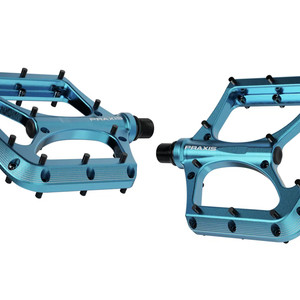

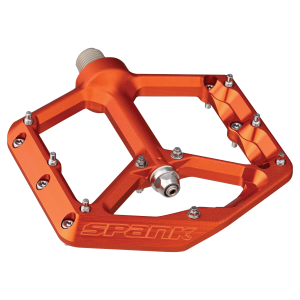
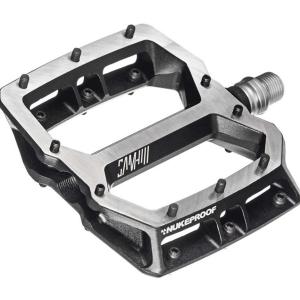


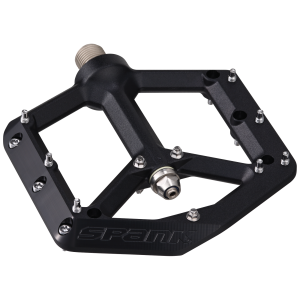
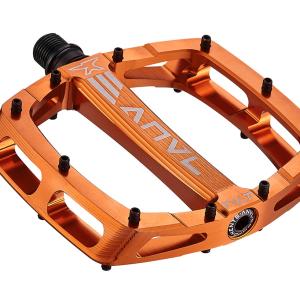









9 comments
Post a reply to: Tested: Kona Wah Wah 2 Alloy Pedal